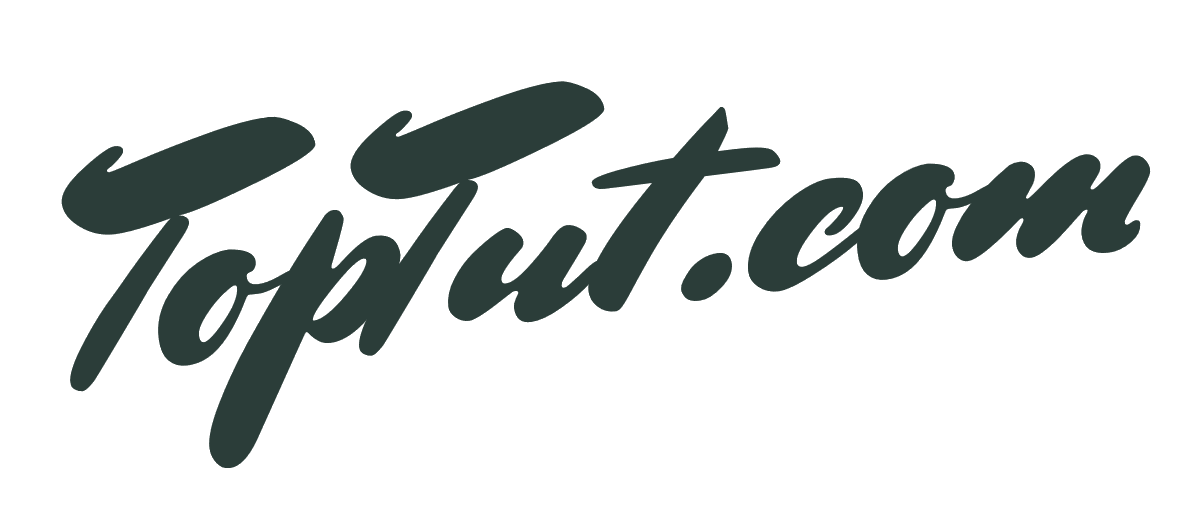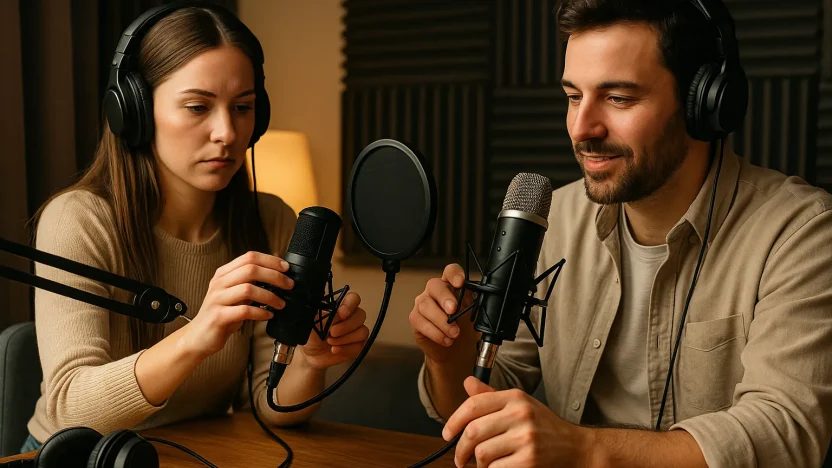Starting a podcast in 2026 isn’t about having a radio voice or a $2,000 mic. It’s about clarity of positioning, tight systems, and treating the show like a product. Here’s a pragmatic, end-to-end playbook—with real numbers, beginner patterns I see all the time, and a Joe Rogan mini-case study so you can borrow what actually scales.
Pick a Position, Not Just a Topic
The shows that win feel inevitable: they occupy a crisp promise to a specific listener, delivered in a familiar cadence. “Interviews with interesting people” is not a promise. “30-minute retention tactics for indie SaaS founders” is. Write one audience sentence, one transformation sentence, and one format sentence. If you can’t do that, you don’t have a show yet—you have a vibe.

The Minimum Viable Studio That Sounds Premium
Good audio is mostly room control and mic technique, not price tags. Record in a soft room (carpet, curtains, couch, clothes rack), sit close to the mic, aim for even peaks around –12 dBFS, and keep background noise out rather than trying to edit it out later. Set sample rate at 48 kHz if you’ll also publish video; 44.1 kHz is fine for audio-only.
Starter Gear That Punches Above Its Weight
| ????️ Starter Kit | What’s inside | Why it works |
|---|---|---|
| ???? USB Simple | Dynamic USB mic (e.g., ATR2100x or PodMic USB), boom arm, closed-back headphones | Plugs straight into your laptop, tight pickup pattern reduces room echo |
| ???? XLR Budget | Dynamic XLR mic (e.g., Shure MV7X), small audio interface (Focusrite Solo), boom arm | Cleaner preamps, upgrade path if you add a second mic |
| ???? Remote-First | Same mic + Krisp/RTX Voice for live noise suppression + Riverside/Zoom local tracks | Guests anywhere, your tracks still sound studio-grade |
Keep gain conservative, use a pop filter, and monitor in real time. One clean take beats heroic post-production.
The Production Loop You’ll Actually Maintain
Treat episodes like sprints. Outline with three acts (hook, meat, payoff), record with chapter markers, edit for signal density, publish with SEO-sane titles, and slice assets for clips and email. Most “I’m inconsistent” problems are actually “I don’t have a loop” problems.
| ✅ Phase | What you do | Tools that won’t fight you |
|---|---|---|
| ✍️ Outline | One-page brief: headline promise, 5–7 beats, CTA | Google Docs/Notion |
| ????️ Record | Local WAV for each speaker; clap sync at the start | Riverside, SquadCast, Zoom + Røde Connect |
| ✂️ Edit/Master | Remove dead air, mouth clicks; light compression; LUFS –16 (stereo) | Descript, Hindenburg, Audition |
| ???? Show Notes | 2–3 keyword phrases, links, timecodes | Notion → CMS |
| ???? Distribution | RSS host, YT video, 3–5 vertical clips, newsletter blurb | Transistor/Buzzsprout, YouTube, CapCut |
What Beginners Struggle With (and How to Cross the Gap)
New hosts I talk to almost always underestimate two things: how much outlining raises perceived quality, and how much ruthless trimming keeps people subscribed. The best early wins come from deleting 15% of your episode, cutting “how are yous,” and front-loading the payoff. Growth happens when you make the first 90 seconds unskippable and the last 30 seconds irresistibly clear about what to do next.
Launch Like a Product, Not a Post
A soft launch with three episodes gives bingeability, a review base, and data on what lands. Aim for one flagship interview, one tight solo tutorial, and one case study. Record five, publish three, keep two in reserve.
| ????️ 30-Day Launch Cadence | Core actions | Output you ship |
|---|---|---|
| Week 1 | Positioning, artwork, trailer | 60-sec trailer + landing page |
| Week 2 | Record 3, outline 2, book 4 guests | 3 masters + 12 short clips |
| Week 3 | Publish 3, email list, YouTube | RSS live + YT versions |
| Week 4 | Guest swaps, Reddit/FB group value posts, cold outreach to 30 target listeners | 10 calls with listeners for feedback |
Hosting, RSS, and Distribution That Doesn’t Break Later
Pick a real podcast host that gives you a clean RSS, dynamic ad markers, and sane analytics. Publish video to YouTube because it is the discovery engine; publish audio everywhere because RSS is freedom. Own the feed, the domain, and the email list—platforms change their rules; your feed doesn’t.
| ???? Where it lives | Why it matters | Examples |
|---|---|---|
| RSS Host | Ownership, dynamic ads, 301 control | Transistor, Buzzsprout, Libsyn |
| Video | Search + clips + chapters | YouTube, Spotify Video |
| Direct reach + monetization | ConvertKit, Beehiiv |
Make It Profitable Faster With a Mixed Model
A show that only relies on brand CPMs grows slowly. Stack revenue lines so you aren’t waiting on 50k downloads to earn lunch money. Sponsors, direct offers, community, and premium feeds all layer well.
| ???? Monetization Track | What it looks like | Typical numbers (ballpark) |
|---|---|---|
| Host-read Ads | 1–2 mid-rolls, 1 pre-roll | $18–$40 CPM depending on niche and placement |
| Affiliate | Unique codes for tools your audience already buys | 10%–30% rev share; works best with B2B |
| Membership | Bonus episodes, AMAs, early drops | 1–3% of listeners at $5–$10/month |
| Services | Strategy calls, audits, cohorts | Highest margin, low volume needed |
| Sponsorship Packages | Bundled: episode + newsletter + clips | Flat fees beat CPM at small/mid shows |
How Many Downloads for ~$5,000/Month?
There isn’t one path. Here are a few realistic mixes.
| ???? Path | Assumptions | Rough monthly outcome |
|---|---|---|
| Ads-Forward | 4 episodes, 25k downloads/ep avg, 2 ad slots, $25 CPM, 70% fill | ≈ $5,000 |
| Hybrid | 15k downloads/ep, 1 mid-roll at $25 CPM + 300 members × $5 + one $1,000 sponsor bundle | ≈ $5,250 |
| Services-Led | 10k downloads/ep + 4 strategy calls at $750 + light ads | ≈ $5,500 |
These are directional; niches with purchase intent (B2B, finance, health) routinely beat generic CPMs, and bundles (podcast + newsletter + social clips) sell better than standalone spots.
Booking Great Guests Before You’re “Big”
Pitch outcomes, not airtime. “We’ll promote to 3,200 subscribers; we’ll repurpose 5 clips; we’ll send you a media kit and all assets within 48 hours” is more convincing than “Please come on my new show.” Stack social proof from day one—advisors, partner logos, or a respected first guest—even if your download count is tiny. Always over-prepare: a one-page brief, a clear arc, and three “banker” questions that guarantee usable answers.
Editing for Signal Density
Listeners forgive average mics; they don’t forgive wasted time. Cut set-up, remove ramble, and add chapter markers so drive-time listeners can jump. Use light compression (3:1), roll off below ~80 Hz, notch any room hum, and limit peaks to around –1 dBTP. Master stereo at about –16 LUFS (mono around –19 LUFS). Export to MP3 128–192 kbps for voice; keep WAV archives.
Titles, Show Notes, and SEO That Actually Drive Plays
Put the benefit first and the guest second. “Grow B2B SEO from 0 to 100k/month with Sara Park” outruns “Sara Park on SEO.” In the description, answer the searcher’s question in the first 160 characters, add 3–5 scannable takeaways, and include every link you mention. On YouTube, add chapters and a pinned comment with the show notes to increase retention.
A Real-World Case Study: What Joe Rogan Did Right (and What You Shouldn’t Copy)
Whatever you think about the content, the operating model behind The Joe Rogan Experience is a masterclass in compounding distribution.
What to steal: the long-form moat, the guest flywheel, and omnichannel clipping. Long episodes created scarcity—guests said more because they had time. The guest network snowballed because each guest introduced the show to their audience. Clips on YouTube acted as perpetual billboards, each one a doorway back to the full episode. Studio quality quietly improved over time, not day one. There was ruthless consistency: show up, ship, repeat.
What to adapt carefully: the runtime and the controversy tax. Three hours works when your guest list and curiosity can sustain it; for most new shows, it’s a retention killer. Hot-button topics and “anything goes” can grow faster but attract moderation and brand-safety issues. Also note the platform strategy: early years rode YouTube discovery; later, a major streaming deal changed access and then loosened again toward broader distribution—platform leverage matters, but owning your feed and audience list matters more.
The lesson: sustained cadence, a differentiated container (unrushed conversations), and relentless clipping built gravity. You don’t need his length or firestorms; you need his discipline and his compounding system.
Common Potholes That Quietly Kill Shows
Inconsistent cadence trains listeners to forget you. Wide, unfocused topics make episodes unpromotable. Bloated cold opens burn the first impression. Over-engineering the stack creates friction you can’t sustain. Neglecting YouTube leaves discovery on the table. Skipping email means you rent, not own, your audience.
Example Episode Blueprint You Can Swipe
Open with the outcome in the first 20 seconds. Tease the two most valuable specifics you’ll cover. Drop a single-sentence host intro and the guest’s most relevant credential. Move into Act I with context and definitions, Act II with detailed playbooks or war stories, Act III with objections and pitfalls. Close with one clear CTA: subscribe, grab the cheat sheet, or answer a question in your email so you can read replies on the next show.
A Simple, Repeatable Budget
| ???? Line Item | Monthly cost | Comment |
|---|---|---|
| Hosting (RSS) | $15–$25 | Transistor/Buzzsprout tier |
| Remote Recording | $0–$24 | Native Zoom works; Riverside adds local tracks |
| Editing (DIY) | $0 | Time, not money; Descript speeds it up |
| Artwork/Brand | $0–$100 | One-time; templates for clips |
| Marketing | $50–$300 | Clip captions, lightweight ads for top episodes |
A lean show can be fully pro under $100/month in cash, with time as your main currency.
Your First 90 Days, Mapped
| ????️ Month | Focus | What “good” looks like |
|---|---|---|
| 1 | Positioning + Launch | 3 episodes live, 2 banked, 300–1,000 downloads total, 100 email subscribers |
| 2 | Cadence + Clips | Weekly publishing rhythm, 12–20 shorts, 5 guest bookings in the calendar |
| 3 | Partnerships + Monetization | One paid bundle at any price, one co-marketing swap, 10 listener calls to validate roadmap |
Sponsor Outreach That Gets Replies
Lead with your audience’s buying moments, not your numbers. “Our listeners are indie app founders stuck at 10–30k MRR and actively shopping for analytics, infra, and hiring tools. We ship audio, video, newsletter, and 5 clips. Here are three past creatives with CTR and hold-time. Packages start at $750; let’s test a two-episode run with a make-good if we miss baseline.” Include a one-page PDF with audience profile, placements, clip examples, and a rate card with three options.
When to Add Video (and How)
If your guests demo products, gesture a lot, or benefit from visuals, add video early. Keep lighting soft and even, frame head-and-shoulders, and design a simple set that’s repeatable. Chapters, end screens, and shorts are the multipliers; the full-length video alone isn’t the growth engine—your clips are.
Closing Perspective
A profitable podcast is a small media business: a narrow promise, a reliable publishing machine, and a monetization mix that matches your niche. Start tiny, make the first minute elite, and compound by showing up. The hosts who last don’t chase virality; they build habits their audience relies on—and they make it easy for sponsors to say yes.
If you want, I can turn this into a WordPress-ready post with schema, a reusable guest brief template, and a seed “sponsor one-pager” you can brand and send this week.

